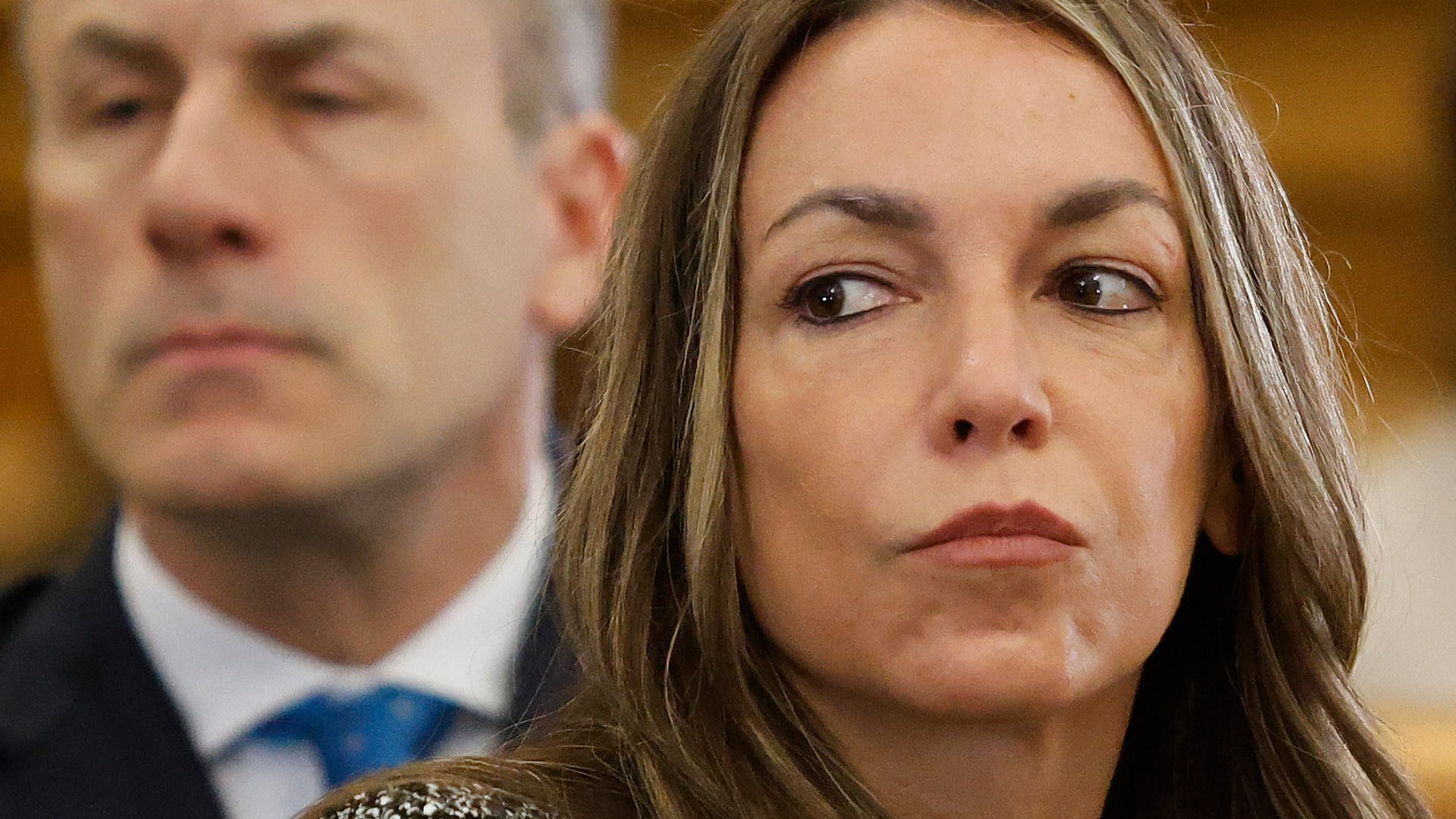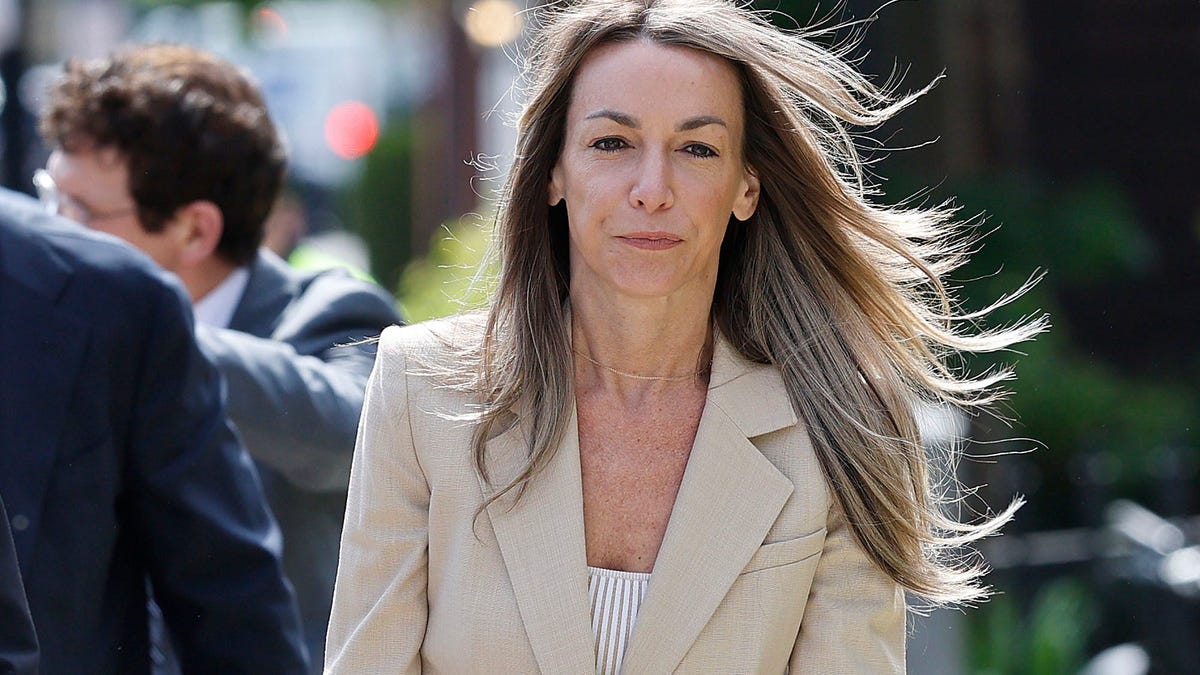
Karen Read’s second murder trial begins with new jury
Karen Read is starting her second trial after being prosecuted for the 2022 death of her boyfriend, Boston police officer John O’Keefe, last year.
Testimony resumed Friday in Karen Read’s second murder trial, as the Massachusetts woman’s defense team called it’s first witness to the stand.
Matthew DiSogra, an engineer in the field of accident reconstruction, cast doubt on the timeline laid out by one of the prosecution’s key witnesses, forensic scientist Shanon Burgess.
DiSogra’s testimony comes a day after prosecutors finished highlighting evidence they believe showed that Read, 45, struck her Boston police officer boyfriend, John O’Keefe, with her SUV and left him for dead in the snow outside another cop’s home after a night of heavy drinking with friends in 2022.
The former finance professor has been charged with second-degree murder, manslaughter and leaving the scene of a crime.
Like true crime? Check out Witness: A library of true crime stories
Her defense team alleges the car crash at the center of the prosecutor’s case never even happened.
They say Read was framed for O’Keefe’s murder in a conspiracy theory developed by Massachusetts police officers, who they say beat O’Keefe, set a ravenous dog on him and then dropped his battered body on a pile of snow during a burgeoning blizzard.
So far, Read’s lawyers have built their case by fiercely questioning the prosecution’s witnesses, often sowing doubt into the reliability of evidence they’ve presented. Now, as they call their own witnesses, the defense will attempt to convince jurors of their version of the events that led up to O’Keefe’s death on January 29, 2022.
The strategy is nearly identical to that used by the defense team in Read’s first trial, which ended in a hung jury in 2024.
Here were the can’t-miss moments from Day 24.
Defense urges judge to allow more Michael Proctor texts into evidence
After dismissing the jury, the judge asked Boston Police Officer Kelly Dever to return to court on Monday to testify. Dever was in the courtroom Friday but did not have a chance to take the stand.
The defense then questioned Jonathan Diamandis, a longtime friend of former Massachusetts State Trooper Michael Proctor, about a text message chain he was in with Proctor, the former lead investigator in O’Keefe’s case.
Defense attorney David Yannetti urged the judge to allow Diamandis to testify about the text messages, which he alleged included derogatory comments about Read pertinent to the trial. In one message, Yannetti claimed Proctor wrote “she’s f’d” in reference to Read.
Proctor is believed to be a critical part of the defense’s case. They’ve long argued that he mishandled the investigation into O’Keefe’s death.
In his rebuttal, Prosecutor Hank Brennan said it would be more proper for the defense to call Proctor to the stand to testify about how the text messages affected the investigation.
The judge said she would make her ruling on Monday morning.
Alan Jackson, one of Read’s defense attorneys, asked DiSogra a slew of questions about his truthfulness in what appeared to be an attempt to re-establish trust in his testimony.
Jackson probed DiSogra about whether his analysis would have changed if he had more data than what Aperture provided, including data showing that O’Keefe took several steps after the last recorded event on Read’s Lexus. DiSogra said that data would have influenced his findings.
Jackson then suggested that if any of Burgess’ data was wrong, DiSogra’s would also be wrong.
“Garbage in, garbage out,” he said, to which DiSogra expressed agreement.
DiSogra finished his testimony and the judge dismissed the jury.
As cross examination continued, the prosecution questioned whether DiSogra made mistakes while interpreting Burgess’ data that could render his testimony at least partially moot.
Brennan zeroed in on the timing of phone calls recorded in the entertainment system of Read’s SUV compared to the call history on phones. He appeared to suggest that, if some of the calls happened while the car was turned off, DiSogra’s assumptions about the data would be inaccurate.
The exchange showcases how each side’s case comes down to the analysis of a few critical seconds on a snowy night three years ago. The timing of the clocks is key in establishing what O’Keefe was doing and where Read’s SUV was in the last moments he was believed to be conscious.
Upon cross-examination, Disogra clarifies that he is not saying whether Read’s SUV got into a collision or not on Jan. 29, 2022, but rather that none of the recorded events were triggered by a collision
The prosecution’s accident reconstruction expert, Judson Welcher, previously testified that a 30% throttle would have been required for Read’s Lexus to register the event.
The prosecution then launched into a series of questions about DiSogra’s background, pointing out that he never received training on analyzing mobile phones or the variances between phone data and car entertainment system data. The questions appeared to be an attempt to discredit DiSogra’s earlier statement about the alignment of clock data.
Read’s defense team began questioning DiSogra, an engineer at the motor vehicle accident reconstruction firm DeltaV, about his review of work completed by Burgess, a digital forensics expert who sought to reconcile discrepancies between data found in Read’s SUV and O’Keefe’s iPhone for the prosecution.
Using clock records from both sources, Burgess created a timeline for the night O’Keefe died that potentially ties Read to the crime. His analysis suggested that O’Keefe’s phone was locked for the last time during the seconds-long period when Read’s car recorded a backup maneuver.
But DiSogra told jurors that phone and vehicle clocks are not likely to align well. DiSogra also said that his independent analysis showed the last lock event on O’Keefe’s phone occurring after Read’s car backed up.
He was asked by Read’s defense attorney whether her Lexus SUV had recorded similar events to the backup maneuver and 3-point turn it recorded on Jan. 29, 2022. DiSogra said 19 similar events occurred before that day, and none of those events were triggered by a collision. Data from the two January events also did not indicate they were caused by a collision, he said.
DiSogra’s testimony could potentially undermine Burgess’ findings, which play a critical role in outlining the timeline of events prosecutors say led up to O’Keefe’s death.
Jackson urged Judge Beverly Cannone to drop all three charges against his client, arguing that the prosecution did not prove that a collision occurred on Jan. 29, 2022 or that Read intended to kill O’Keefe. Jackson called it a “vindictive prosecution.”
The prosecution pushed back, saying they presented evidence showing Read was intoxicated beyond the legal limit and of a collision at 34 Fairview Road, where O’Keefe’s body was found. They pointed to voicemails Read left O’Keefe in the hours before his body was found and her statements that she could have clipped him.
Cannone denied the defense’s motion to dismiss all three charges.
CourtTV has been covering the case against Read and the criminal investigation since early 2022, when O’Keefe’s body was found outside a Massachusetts home.
You can watch CourtTV’s live feed of the Read trial proceedings from Norfolk Superior Court in Dedham, Massachusetts. Proceedings began at 10 a.m. ET.
